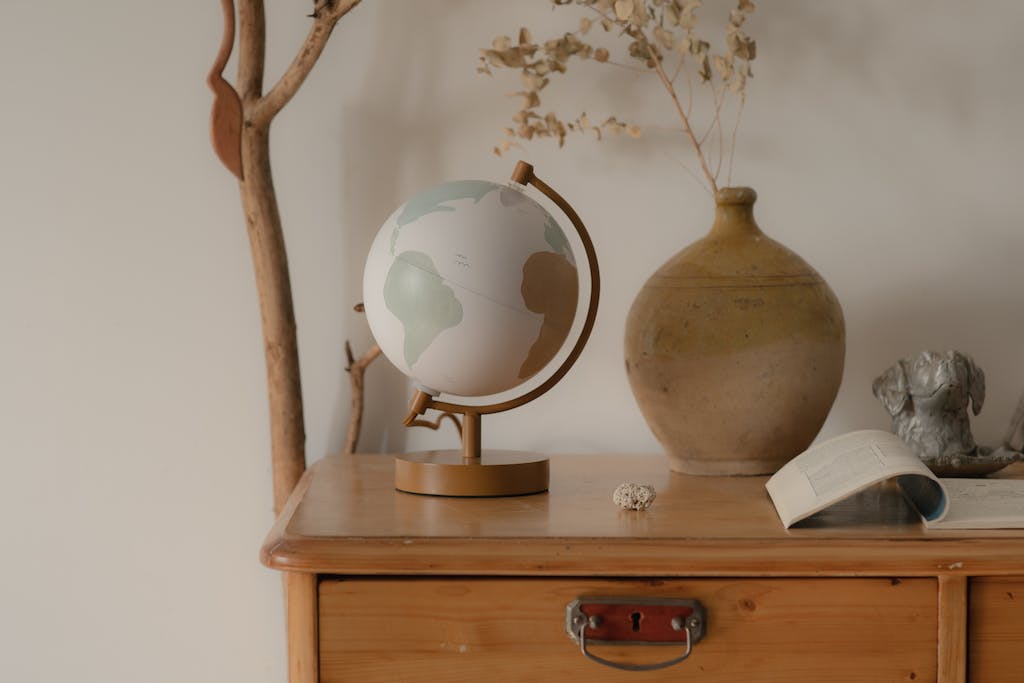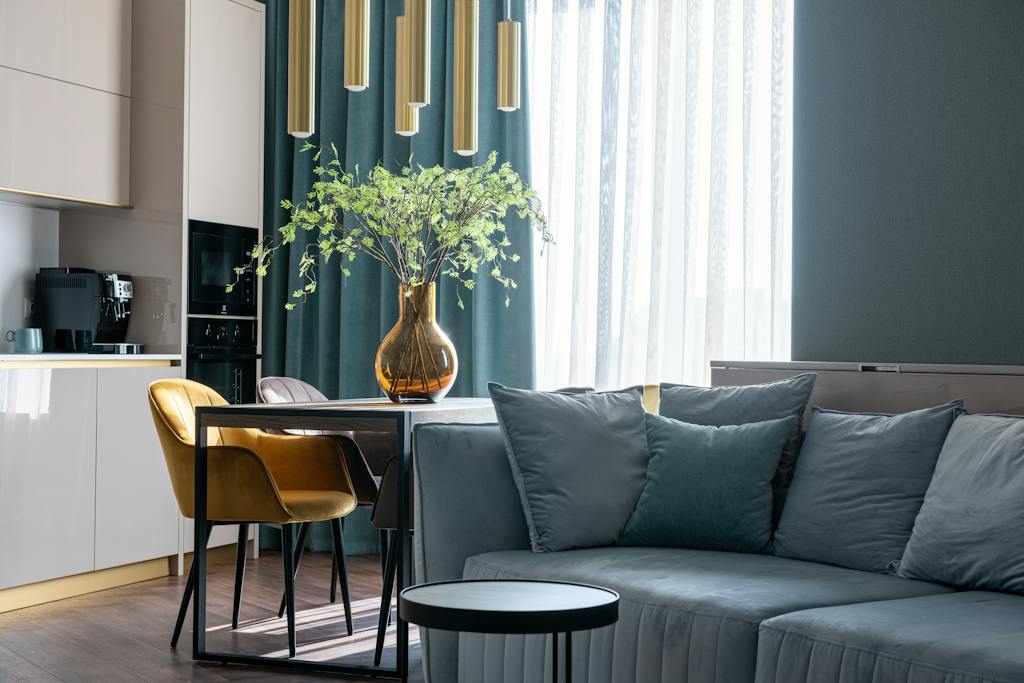
In a world that is becoming increasingly aware of the importance of sustainability and reducing our carbon footprint, the interior design industry is stepping up to the challenge. Gone are the days of sacrificing style for sustainability. Today, we find ourselves at the cusp of a design revolution, where eco-friendly furniture takes center stage in creating beautiful, functional, and environmentally conscious homes. Imagine walking into a home that exudes elegance and sophistication, yet every piece of furniture contributes to a better future for our planet. It’s a vision that is quickly becoming a reality as designers and homeowners alike embrace the concept of eco-friendly furniture. In this blog post, we will explore the exciting possibilities and discuss how you can incorporate this trend into your own space. From recycled materials to sustainable sourcing, eco-friendly furniture embodies the principles of both style and responsibility. This forward-thinking approach not only reduces waste and minimizes environmental impact but also supports a more ethical and conscious way of living. So, whether you’re renovating your entire home or just looking to add a few statement pieces, join us as we delve into the future of interior design and discover how embracing eco-friendly furniture can transform your space into a sustainable sanctuary.
The Rise of Eco-Friendly Furniture in Interior Design
As the world becomes more conscious of the impact we have on the environment, the demand for eco-friendly furniture in interior design is on the rise. People are now seeking out furniture that not only looks good but also aligns with their values of sustainability and responsibility. This shift in consumer mindset has led to a surge in innovative designs and materials that prioritize both style and environmental consciousness.
One of the key factors driving the popularity of eco-friendly furniture is its ability to reduce waste. Traditional furniture production often involves cutting down trees and using non-renewable resources, leading to deforestation and increased carbon emissions. In contrast, eco-friendly furniture is made from recycled or sustainable materials, such as reclaimed wood or bamboo, which helps to minimize waste and preserve natural resources.
Furthermore, eco-friendly furniture promotes ethical sourcing practices. Many manufacturers now prioritize working with suppliers who adhere to sustainable harvesting methods and fair labor practices. This ensures that the production process is not only environmentally friendly but also socially responsible.
Understanding the Principles of Sustainable Sourcing
Sustainable sourcing is a fundamental principle behind eco-friendly furniture. It involves carefully selecting materials that have minimal environmental impact throughout their lifecycle. For example, instead of using hardwood from endangered forests, designers are turning to alternatives like bamboo or reclaimed wood.
Bamboo is an excellent choice for sustainable sourcing due to its rapid growth rate and regenerative properties. It can be harvested without causing any harm to the plant itself, making it a highly renewable resource. Reclaimed wood, on the other hand, gives new life to old timber that would otherwise end up in landfills.
In addition to material selection, sustainable sourcing also considers factors such as transportation distance and energy consumption during manufacturing processes. By opting for local suppliers and using energy-efficient production methods, designers can further reduce the carbon footprint of their furniture.
Exploring Innovative Materials for Eco-Friendly Furniture
The world of eco-friendly furniture is constantly evolving, with designers pushing the boundaries of what is possible. Innovative materials are being developed to create beautiful and sustainable pieces that cater to a wide range of design preferences.
One such material is recycled plastic, which can be transformed into durable and stylish furniture. By repurposing plastic waste, designers not only prevent it from ending up in landfills or oceans but also reduce the demand for virgin plastic production. This helps to conserve natural resources and minimize pollution.
Another exciting development in eco-friendly furniture is the use of organic fabrics and natural fibers. These materials are free from harmful chemicals and pesticides, making them safer for both the environment and human health. Organic cotton, hemp, and linen are popular choices for upholstery, offering a sustainable alternative to synthetic textiles.
Reducing Waste: The Importance of Recycling in Design
Recycling plays a crucial role in reducing waste in interior design. By repurposing materials that would otherwise be discarded, designers can create unique and environmentally friendly pieces of furniture.
For example, old wooden pallets can be transformed into stylish coffee tables or bookshelves with just a little creativity and craftsmanship. Similarly, glass bottles can be melted down and reshaped into decorative vases or lighting fixtures. These upcycled creations not only add character to your space but also contribute to a more sustainable lifestyle.
In addition to recycling existing materials, some manufacturers are even exploring innovative techniques such as 3D printing using recycled plastics. This allows for precise customization while minimizing waste during the production process.
Incorporating Organic and Natural Elements into Your Space
Bringing nature indoors is a key aspect of eco-friendly interior design. By incorporating organic and natural elements into your space, you can create a harmonious and sustainable environment.
One way to achieve this is through the use of indoor plants. Not only do they add a touch of greenery to your space, but they also help purify the air by absorbing harmful pollutants. Plants like peace lilies, snake plants, and spider plants are known for their air-purifying properties and are easy to care for.
In addition to plants, natural materials such as stone, wood, and rattan can be used to create a sense of warmth and connection with the outdoors. These materials not only look beautiful but also have a lower environmental impact compared to synthetic alternatives.
Energy Efficiency: The Role of Smart Technology in Sustainable Design
Sustainability in interior design goes beyond just the materials used; it also involves energy-efficient practices. Smart technology has emerged as a powerful tool in creating more sustainable homes.
Smart thermostats, for example, allow homeowners to regulate their heating and cooling systems more efficiently, reducing energy waste. Similarly, smart lighting systems can automatically adjust brightness levels based on natural light availability or occupancy in the room.
By integrating these technologies into your home, you can not only reduce your energy consumption but also save on utility bills. This makes eco-friendly furniture an investment that pays off both financially and environmentally.
Creating a Minimalist and Functional Home with Eco-Friendly Furniture
Eco-friendly furniture lends itself well to minimalist design principles. By choosing pieces that are both functional and aesthetically pleasing, you can create a clutter-free space that promotes calmness and mindfulness.
When selecting furniture for your home, consider its versatility and durability. Opt for pieces that serve multiple purposes or have modular designs that can adapt to your changing needs. This reduces the need for excess furniture and ensures that each piece has a purpose.
Additionally, eco-friendly furniture often features clean lines and simple silhouettes, which contribute to a minimalist aesthetic. By focusing on quality over quantity, you can create a space that is both stylish and sustainable.
Designing Outdoor Spaces with Sustainability in Mind
Eco-friendly design principles extend beyond the walls of your home and into your outdoor spaces. Whether you have a small balcony or a spacious backyard, there are plenty of opportunities to create a sustainable outdoor oasis.
When choosing outdoor furniture, look for materials that can withstand the elements without causing harm to the environment. Recycled plastic, metal, or sustainably sourced wood are all excellent options. Additionally, consider incorporating native plants into your landscaping as they require less water and maintenance compared to exotic species.
To further reduce your environmental impact, explore options such as rainwater harvesting systems or solar-powered lighting for your outdoor space. These additions not only save resources but also add functionality and charm to your garden.
Eco-Friendly Furniture for Small Spaces: Maximizing Style and Efficiency
Living in a small space doesn’t mean sacrificing style or sustainability. In fact, eco-friendly furniture is particularly well-suited for compact living environments as it prioritizes efficiency and functionality.
Multi-purpose furniture is key when it comes to maximizing space in small homes. Look for pieces that can serve multiple functions such as storage ottomans or sofa beds. These versatile designs allow you to make the most of every square inch without compromising on style.
In addition to multi-purpose furniture, consider utilizing vertical space by incorporating wall-mounted shelves or hanging planters. This not only adds visual interest to your space but also frees up valuable floor space.
Conclusion: Embracing a Sustainable Future through Eco-Friendly Furniture
The future of interior design lies in embracing eco-friendly furniture. By prioritizing sustainability and responsible sourcing, we can create homes that are not only beautiful but also kind to the planet.
From reducing waste through recycling and upcycling to incorporating organic materials and energy-efficient technologies, there are countless ways to make your space more sustainable. By making conscious choices when it comes to furniture and design, you can contribute to a greener future while still enjoying a stylish and comfortable home.
So, whether you’re starting from scratch or looking to make small changes, consider the impact of your choices on the environment. Together, we can create a world where eco-friendly furniture is the norm rather than the exception.






